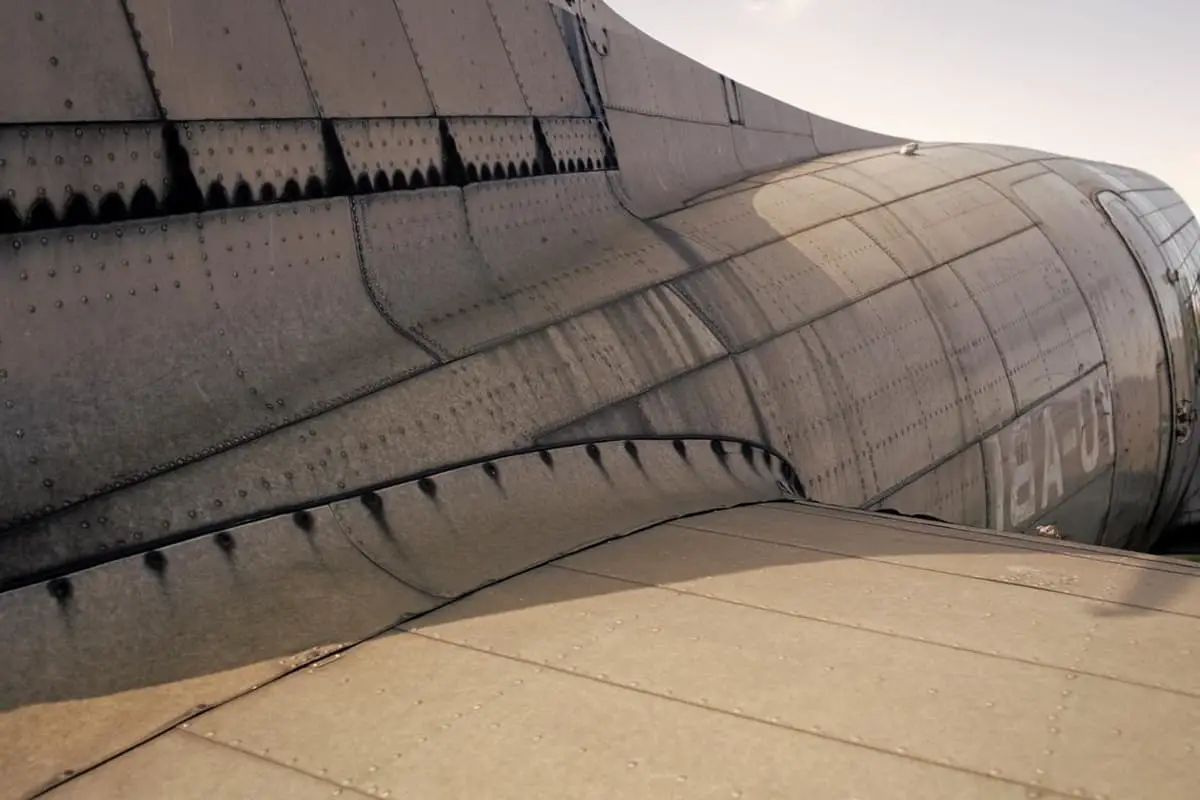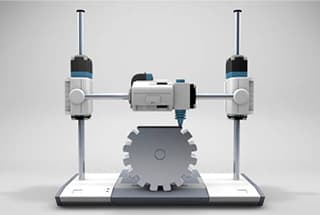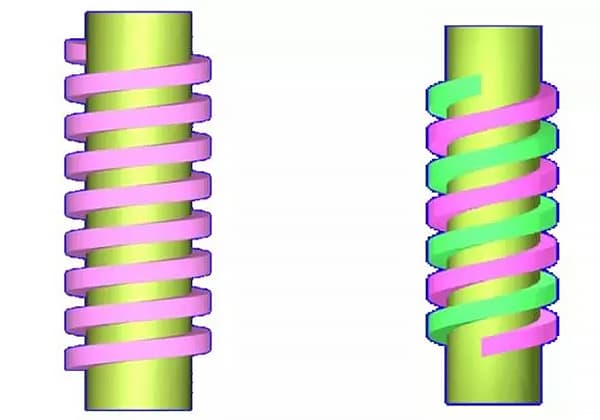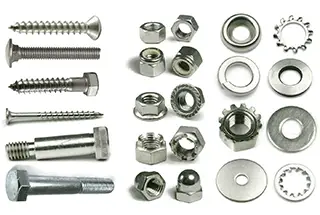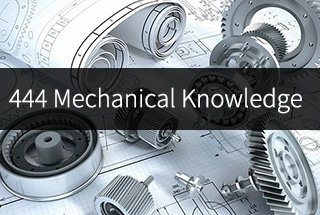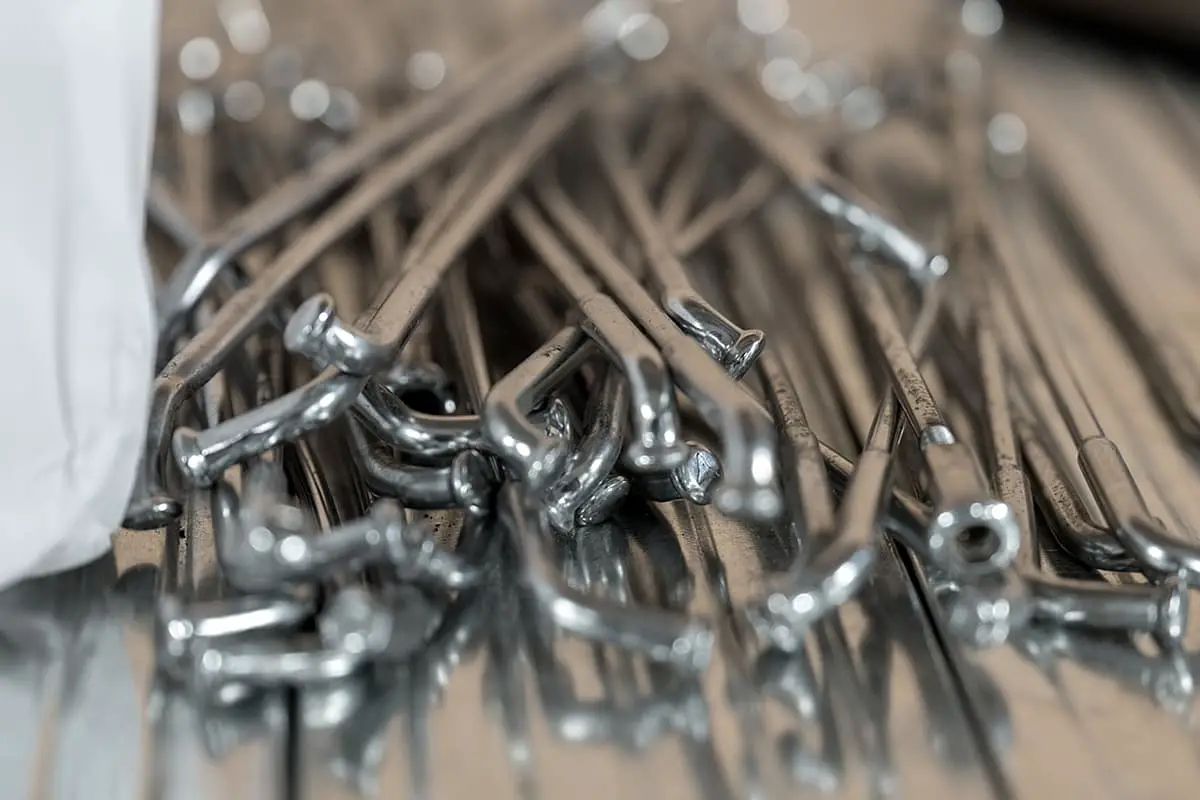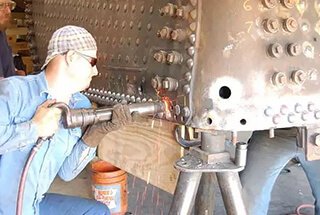
Have you ever wondered how the tiny rivets holding massive structures together actually work? In this article, we’ll unravel the fascinating world of rivet connections, exploring their types, strength calculations, and real-world applications. By the end, you’ll understand the crucial role these small components play in engineering marvels. Stay tuned to learn how rivets keep our world securely fastened!
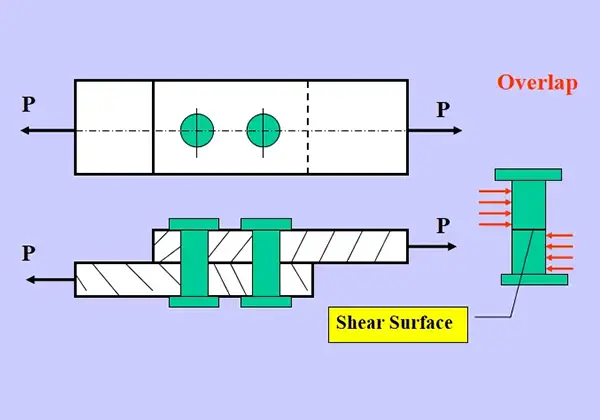
Rivet connections are a fundamental method of joining two or more pieces of material, particularly metal, and are widely used in various engineering and construction applications. Rivets, which are permanent mechanical fasteners, consist of a smooth cylindrical shaft with a head on one end. The installation process involves inserting the rivet into a pre-drilled hole and then deforming the tail end to create a second head, thereby securing the materials together.
Historically, riveted connections have been essential in the construction of significant structures. Notable examples include the Eiffel Tower in Paris and the Golden Gate Bridge in San Francisco. These structures showcase the durability and strength of riveted joints, which have stood the test of time and continue to perform reliably.
The arrangement of rivets in patterns such as chain, zig-zag, or staggered influences the joint’s performance.
Rivets can be made from various materials, including aluminum, steel, brass, and copper. The choice of material depends on specific requirements such as strength, corrosion resistance, and ductility.
Riveted joints are preferred in scenarios where the joint needs to withstand dynamic loads and where joining dissimilar materials is necessary. They are also chosen for their historical significance and proven reliability in critical structures.
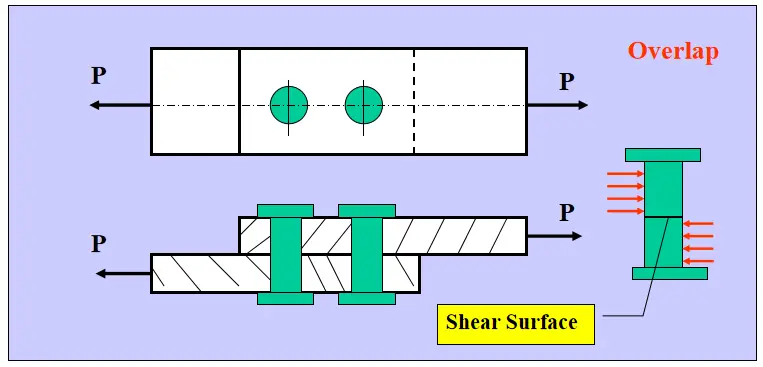
Single Cover Butt Joint

Double Cover Butt Joint
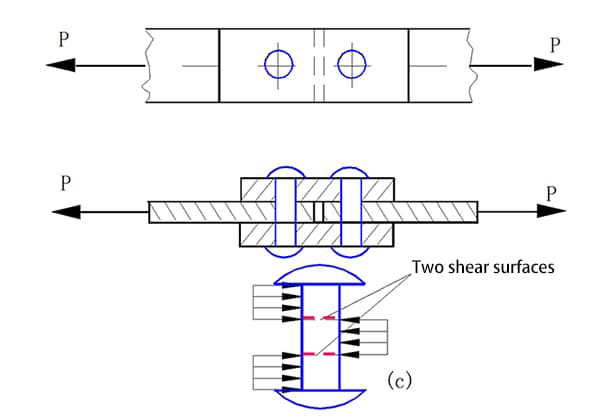
Lateral Load Bearing of Rivet Group

In riveted joint (as shown in the above figure), to simplify calculations, assume that:
The formula for calculating the force acting on each rivet is:

Example:
A joint using four rivets is used to connect two steel plates. The material of the steel plates and rivets is the same. The diameter of the rivets is d=16mm, the size of the steel plate is b=100mm, t=10mm, P=90KN, the allowable stress of the rivets is [τ]=120MPa, the allowable yield stress is [σjy]=120MPa, and the allowable tensile stress of the steel plate is [σ]=160MPa. Calculate and check the strength of the riveted joint.


(1) Shear strength of the rivets:
The force acting on each rivet is P/4.
The shear force acting on each rivet is given by:


(2) Crushing strength of the rivets:

The force acting on each rivet due to crushing is:

The area of the rivet that is being crushed is:


(3) Tensile strength of steel plate


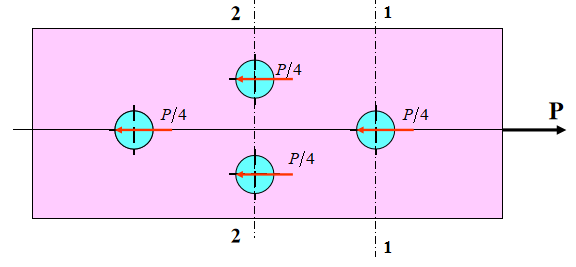

Thinking question:
Area of shear surface for the dowel pin A.
Area of extrusion surface for the dowel pin Ajy.

Additional question:
Punch a hole of the shape shown in the figure on a 5mm thick steel plate. If the shear strength limit of the steel plate material is 𝜏𝑏 = 300MPa, calculate the punching force F required for the punch press.

Solution: The area of the shear surface is

Additional question:
The maximum punching force of a punch press is P = 400KN, the allowable compressive stress [𝜎] of the punch material is 440MPa, and the shear strength limit of the steel plate is 𝜏𝑏 = 360MPa. Determine the minimum diameter d that the punch can punch, and the maximum thickness 𝜹 of the steel plate that can be punched.

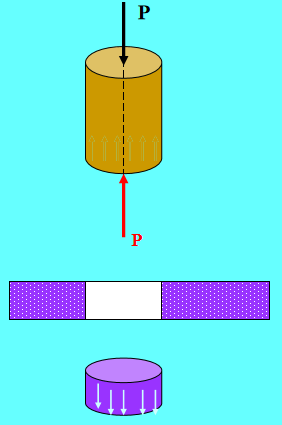

Solution: The punch undergoes axial compressive deformation.

According to the shear failure condition of the steel plate:

Example:
Using two steel rails to rivet into a composite beam, the connection situation is shown in figure a and b.
The cross-sectional area of each steel rail A is 8000mm, and the moment of inertia of each steel rail’s cross-sectional area relative to its own centroid is I = 1600 × 10mm. The rivet spacing s is 150mm, the diameter is d = 20mm, and the allowable shear stress [τ] is 95MPa. If the internal shear force Q of the beam is 50kN, verify the shear strength of the rivets. The friction between the upper and lower steel rails is not considered.

Solution: When the upper and lower two steel rails bend as a whole, the cross-sectional area of the upper steel rail is under compression stress, and the cross-sectional area of the lower steel rail is under tensile stress.

Due to the different bending moments on adjacent cross-sections, the normal stress at corresponding points is different, and therefore there is a tendency for longitudinal displacement along the contact surface between the upper and lower steel rails, causing the rivets to bear shear forces.
The shear force borne by each row of rivets is equal to the difference in compression (tensile) force on two cross-sections of a steel rail at a longitudinal distance of S.

Assuming that the steel rails transmit shear stress everywhere on the contact surface, the width of the contact surface is b.
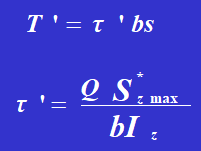
Szmax represents the static moment of the cross-sectional area of a steel rail with respect to the neutral axis.


Iz is the moment of inertia of the entire cross-sectional area with respect to the neutral axis.


The shear stress of the rivet is:

The shear stress of the rivet satisfies the strength criteria.
Rivet assembly subjected to torsional loads (see Figure).

Let the centroid of the cross-section of the rivet assembly be the 0 point.

Assuming that any straight line on the steel plate (such as OA or OB) remains straight after the rotation, the average shear strain of each rivet is proportional to the distance from the center of the rivet cross-section to point O.
If the diameter of each rivet is the same, the force on each rivet is proportional to the distance from the center of the rivet cross-section to the center of the rivet assembly sectional center O, with the direction perpendicular to the line connecting the point and the center O.

Pi represents the force acting on each rivet, and ai represents the distance from the center of the cross-section of the given rivet to the centroid of the cross-section of the rivet assembly, denoted as O.
The rivet assembly subjected to eccentric lateral loads (see Figure a).

Simplifying the eccentric load P acting on the rivet assembly to the centroid point O, we obtain a force P passing through the point O and a moment m = Pe that rotates around the point O.
If the diameter of each rivet in the same rivet assembly is the same, the force P1′ caused by the lateral force P and the force P1” caused by the moment m can be calculated. The force acting on each rivet is the vector sum of P1′ and P1”. After determining the force P1 on each rivet, the shear and compression strength of the rivet with the maximum force can be checked separately.

Example:
A bracket connected by a single rivet is subjected to a concentrated force P, as shown in Figure a. The external force P is known to be 12 kN. The diameter of the rivet is 20 mm, and each rivet is subjected to single shear. Calculate the maximum shear stress on the cross-section of the rivet under the maximum force.

Solution:
The rivet assembly is symmetrical with respect to the x-axis, and the center of rotation is at point O, which is the intersection point of the line connecting rivet 2 and rivet 5 with the x-axis.
1. Simplifying the force P to point O, we have:
P = 12 kN.
m=12 0.12=1.44KN.m
2. Under the action of the force P passing through the center of rotation, and considering that each rivet has the same diameter and material, the force on each rivet is equal.

3. Under the action of the moment m, the force that each rivet bears is proportional to the distance from the rivet to the center of rotation.


According to the balance equation:


Solving the equation, we get:


Therefore,



4. Draw the force diagram of each rivet and combine vectors Pi’ and Pi” to obtain the total shear force acting on each rivet, including its magnitude and direction. It can be concluded that rivet 1 and rivet 6 bear the maximum force, with the value of the maximum force being:

The shear stress on the cross-section of the rivet is:

Below are answers to some frequently asked questions:
In construction, various types of rivets are utilized for their unique properties and applications. Solid rivets, also known as round rivets, are the most common and oldest type, consisting of a solid shaft and a head. They are installed by deforming the tail using a hammer or crimping tool and are widely used due to their high strength and reliability. Structural steel rivets are similar to solid rivets but are designed for high-stress applications in commercial construction, such as bridges and high-rise buildings.
Blind rivets, or pop rivets, are tubular rivets with a mandrel through their center, installed using a riveter. They are ideal for applications where access to the rear side of the joint is limited. Drive rivets, similar to blind rivets, do not require a special tool for installation and are driven into place using a hammer, suitable for applications where the holes do not penetrate the entire panel or block.
Flush rivets, or countersunk rivets, have countersunk heads and holes, allowing them to sit flush with the surface, reducing aerodynamic drag and providing a smooth surface finish. Split rivets, or bifurcated rivets, feature sharp ends that split into opposite directions when driven into a material, ideal for joining soft materials like wood, plastic, and leather. Tubular rivets are hollow with a head at one end and a tail at the other, requiring less force to install and used in applications where the materials being fastened are soft.
Rivets are made from various materials, including stainless steel, steel, aluminum, brass, and copper, each chosen based on the specific requirements of the project. These materials offer different strengths, corrosion resistance, and weight characteristics, making rivets versatile for a range of construction applications.
When comparing riveted connections to welded connections, several key differences and considerations emerge. Welded joints generally offer higher strength and load-carrying capacity compared to riveted joints. A sound welded joint can achieve 100% of the parent material’s strength, whereas riveted joints have lower strength due to the reduction in cross-sectional area caused by the holes drilled for the rivets.
In terms of design and installation, welding is often simpler and faster as it does not require pre-drilled holes or additional parts like rivets. Riveting, however, involves drilling, fastening, and flattening the rivets, making it more time-consuming and labor-intensive.
Performance under vibration and fatigue differs between the two methods. Riveted joints are better at resisting cyclic loading and vibration because the deformation and expansion of the rivets can strengthen the connection over time. Welded joints, while strong, can be more susceptible to degradation under repeated loading cycles.
When it comes to materials and compatibility, riveting is more versatile for joining dissimilar materials since it does not require consideration of melting points. Welding, however, requires materials with compatible melting points and thermal properties.
Aesthetically, welded joints can provide a smoother surface finish after post-processing, which is often more pleasing compared to the visible rivet heads of riveted joints.
Regarding maintenance and disassembly, riveted joints are easier to disassemble and repair since the rivets can be drilled out and replaced. Welded joints are more permanent and require cutting and re-welding for disassembly, which is more time-consuming and costly.
In terms of weight and structural integrity, welded structures are typically lighter because they do not require additional materials like rivets and straps. Riveted structures can be heavier due to these additional components.
Cost and efficiency also play a role in the choice between the two methods. Riveting tends to be more expensive overall, despite the low cost of individual rivets, due to the accumulation of material, operational, and labor costs. Welding, especially with automated processes, can be more cost-efficient and faster.
In summary, the choice between riveting and welding depends on the specific requirements of the application, including strength needs, material compatibility, aesthetic considerations, and maintenance requirements. Welding offers higher strength, simpler design, and faster production but may introduce thermal distortion and is less flexible for disassembly. Riveting provides better resistance to vibration, easier disassembly, and the ability to join dissimilar materials but is generally weaker and more labor-intensive.
Riveted joints are widely utilized in modern engineering due to their durability, reliability, and specific advantages over other joining methods. In the aerospace industry, riveted joints are crucial for connecting components such as fuselage panels and wings, where their lightweight and high-strength characteristics are essential for maintaining structural integrity while minimizing weight. In shipbuilding, riveted joints are indispensable for assembling hulls and other key parts of ships, offering resistance to water pressure and corrosion, which is critical for ensuring watertight integrity and safety in rough waters.
In the construction and infrastructure sectors, riveted joints are used in frameworks like bridges, towers, and buildings. These joints are valued for their ability to evenly distribute loads and provide stability to large structures, making them ideal for applications that require robust support, such as in bridge beams and trusses. For pressure vessels and boilers, riveted joints are preferred where thermal processes like welding might be impractical or where the joints need to withstand temperature fluctuations and vibrations.
The automotive and public transport industries also benefit from riveted joints, particularly in the manufacturing of bus and trolleybus bodies. These joints ensure strong and reliable connections capable of withstanding the stresses and vibrations associated with these vehicles. Additionally, riveted joints are found in consumer products like kitchen utensils and pocket knives, where their strength, lightweight nature, and resistance to corrosion are advantageous.
Overall, riveted joints are favored in environments subject to vibration or dynamic loads due to their resistance to loosening over time. They are also suitable for industries experiencing temperature fluctuations, as they do not require heat for installation and are resistant to thermal expansion. Furthermore, riveted joints are easier to inspect and disassemble compared to welded joints, with less damage to the parts involved. These characteristics make riveted joints a preferred method in various critical and high-performance industries.
Riveted connections offer several advantages and disadvantages, making them suitable for specific applications while presenting challenges in others.
Advantages of using riveted connections include cost-effectiveness, as rivets are inexpensive and do not require electricity or special materials, saving on both material and energy costs. Riveting also increases production output since it generally requires less equipment and preparation compared to welding, thus reducing time and resources needed. The process generates minimal waste residue, enhancing efficiency. Riveted connections provide flexibility in design and are easier to inspect and maintain; worn-out rivets can be quickly replaced with minimal equipment. They are versatile, capable of joining both ferrous and non-ferrous metals, as well as non-metallic materials like wood, plastic, and asbestos sheets. Riveting is environmentally and user-friendly, producing no fumes or gases, making it safer for workers. Moreover, riveted joints offer high shear strength and good fatigue resistance, suitable for applications subjected to vibration and impact forces.
However, riveted connections also have disadvantages. They require higher labor input, involving several steps such as drilling holes and installing the rivets, which can increase manpower costs. Rivets add weight to the structure, which can be significant in large structures and may affect structural efficiency. The holes needed for rivets can weaken metal plates, leading to stress concentration around the holes, potentially requiring additional thickness or overlapping plates to maintain structural integrity. Aesthetically, riveted connections are more visible and can protrude from the structure, reducing visual appeal compared to welded joints. Riveting can be noisy during installation and may be prone to corrosion if not sealed properly, increasing maintenance costs over time. Riveted joints may not provide a tight or leak-proof seal unless hot rivets or sealants are used, which can be a disadvantage in certain applications. Finally, while rivets can be replaced, the process can be cumbersome and noisy, and replacing rivets during maintenance can be more challenging compared to other fastening methods like bolts.
In summary, riveted connections are cost-effective and flexible but come with higher labor requirements, added structural weight, stress concentration issues, and aesthetic limitations. The choice between riveting and other joining methods depends on the specific project requirements.
Maintaining and repairing riveted connections effectively involves several crucial steps to ensure the integrity and longevity of the structure. Regular inspection is key; check riveted joints for signs of wear, corrosion, and fatigue. Clean the connections periodically to remove any debris, dirt, or corrosive substances that could compromise the joint. For cleaning pneumatic rivet guns used in maintenance, ensure thorough cleaning, lubrication, and inspection of air hoses and fittings to prevent malfunctions.
When it comes to repairs, start by identifying any faults such as incorrect rivet sizes or improper hole preparation. If rivets need to be replaced, carefully remove them by drilling through the head and using a pin punch to snap off the shank without damaging the surrounding material. Always replace rivets with the correct size and type, ensuring proper installation techniques to avoid issues like sloping heads or cracks.
Specialized techniques such as bobbing, frenching, and ring welding can be used for more extensive repairs, particularly in older or heavily damaged rivets. It’s also crucial to address any potential corrosion by sealing joints properly, especially when dissimilar metals are involved, to prevent galvanic corrosion.
Ensure that riveted joints are not subjected to excessive fatigue and vibration, which can lead to failure. Avoid over-compression during installation to prevent voids or work hardening of the metal. After repairs, conduct thorough testing and inspections to confirm the structural integrity and watertightness of the joints. Address any leaks promptly with additional caulking or rivet adjustments.
By following these maintenance and repair guidelines, you can maintain the strength, reliability, and safety of your riveted connections over time.

